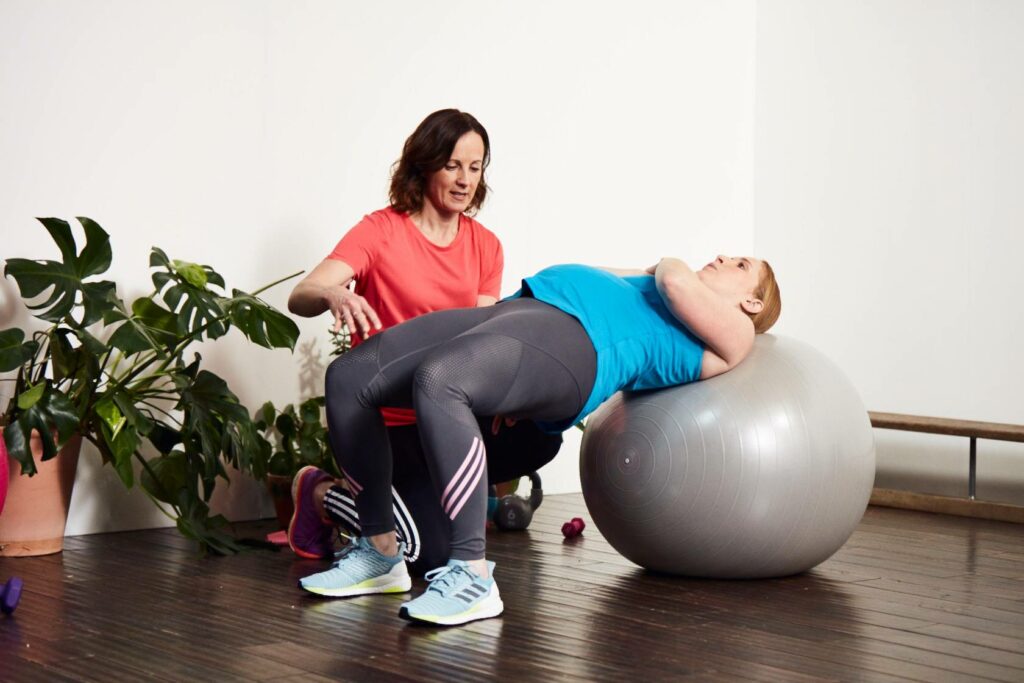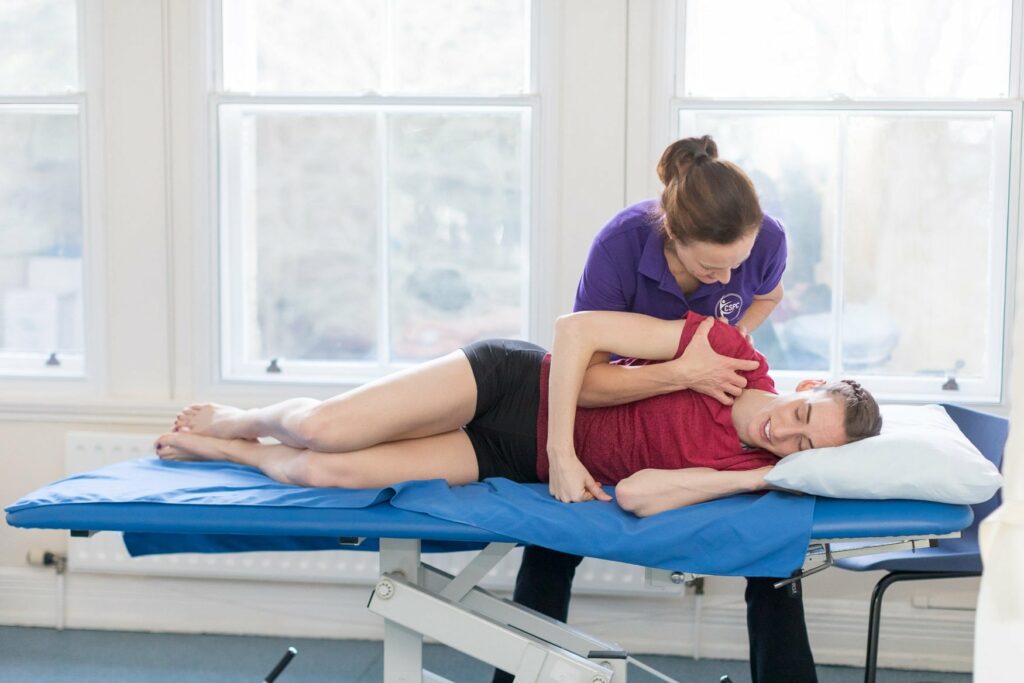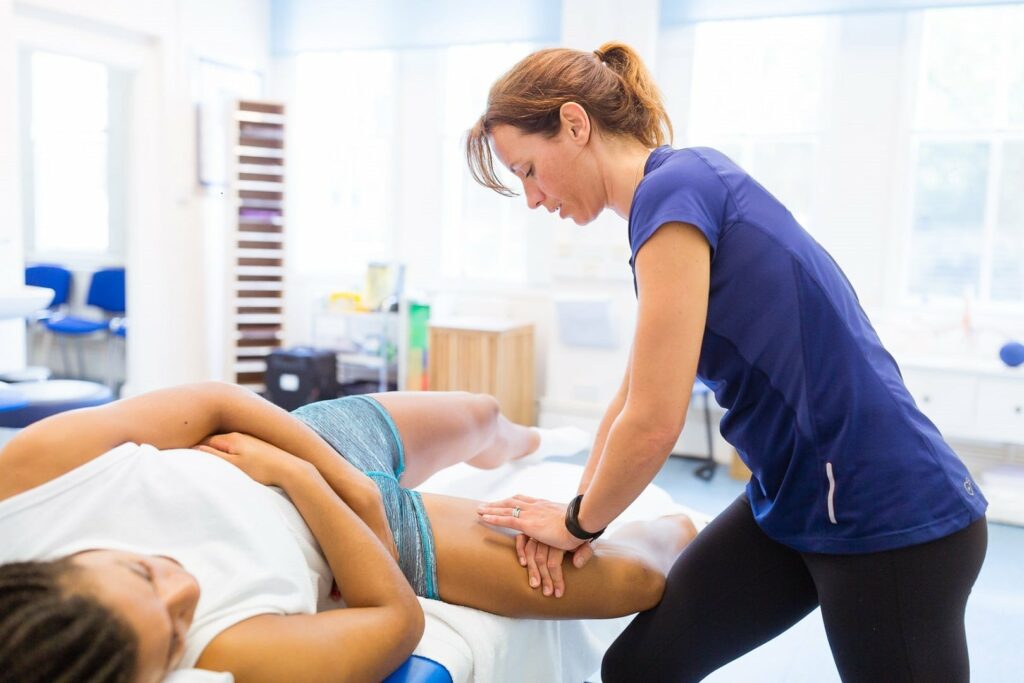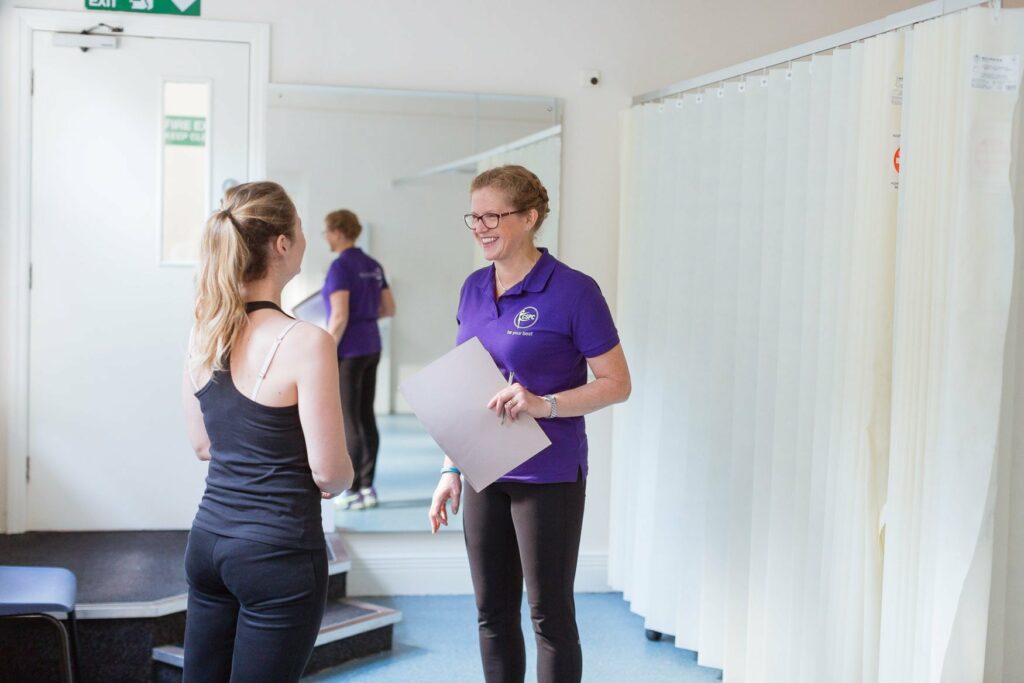Injury prevention and training for athletes
Feet and Achilles tendons
Stretching and strengthening

Bone health and weight training
If you are used to exercising, it should be possible to maintain some training, making adaptations when necessary. During the months when it is possible, training should include some impact to help with bone health. This may be in the form of jogging/running if you are a runner. If you are used to doing strength training with weights, it is usually possible to continue with this, as long as good postures are maintained, you can breathe throughout, and the weight is adapted into the pregnancy. It is possible to do weights on machines as long as they are not done isometrically (holding the weight) and that the mother is able to breathe throughout. It is very important to prevent a Valsalva manoeuvre during training (holding the breath and pushing down and thereby increasing abdominal pressure). You should avoid exercising on your back after 16 weeks.
Please note that every pregnancy is different, and it is important to listen to your body.
Temperature regulation
Maintaining fitness
Musculoskeletal changes
Abdominal strength
It is really important to get some guidance to regain abdominal strength. The abdominal muscles are stretched throughout the pregnancy, and lose strength, function and tone. The muscles need to be retrained to work properly once the baby arrives. The external oblique muscles in particular work at a completely different angle during the latter stages of the pregnancy and need to be retrained to work in the correct way. There will also be a normal split in the tendon vertically down the middle of the abdominal muscles (diastasis recti, or rectus diastasis), which means care will need to be taken in the rehabilitation of the abdominal muscles after pregnancy, so that as the muscles work, they draw the abdominal muscles together in a strong, functional way, narrowing the gap. All sports have different requirements for abdominal function and it is so important to get this area right.
You should avoid things like sit-ups, planks, press ups and leg raises until you are ready- one thing that will catch you out will be getting out of bed without rolling onto your side!
Please see the section on rectus diastasis/abdominal separation. The rectus diastasis test can be used to check you are doing your exercises correctly and monitor if you are ready to progress them.
Caesarean sections
Pelvic floor
The pelvic floor is affected both during pregnancy and during the birth. It is important to address this post birth, with the help of a physiotherapist to regain normal strength and support for the pelvic contents and to help with continence.
Pelvic floor training should start during the pregnancy and continue after the birth, until normal function is achieved
Returning to training
Six weeks, after the first postpartum check, would be an advisable earliest time for resumption of training, with exception of low level core, glutes, and foot/ calf strengthening.
Within the next six to twelve weeks, it should be possible to resume training as able, incorporating tendon loading without going into excessive dorsiflexion, core work, drill work, movement pattern work. Your physiotherapist should be able to advise you on getting back into training after your baby arrives.
See why patients
love CSPC Physiotherapy



